Featured Editorials
-
Paradise Valley Police Training Center Needed Now
By Councilmember Julie Pace For approximately ten years, our town has discussed the need for a Paradise Valley Police Training Center and Shooting Range. The Council even funded plans to make this physical project a reality. The actual funding of the Police Training Center, however, kept getting put...Read more
-
January Arts & Culture: Five Can’t-Miss Events Around the Valley
January transforms the Valley into Arizona’s cultural epicenter, offering art enthusiasts and culture seekers an impressive lineup of world-class events. Whether you’re a serious collector or simply appreciate creativity in all its forms, this month delivers something extraordinary acros...Read more
-
Paradise Valley Reconsidering How Best to Utilize Funds: What You Should Know
Paradise Valley Town Council is changing how it distributes community service funding, and residents should understand what this means for local nonprofit organizations and the broader community. At its December 11 work session, the council heard a proposal to adopt a hybrid approach combining reque...Read more
Marketplace
-
Reeis Air, Plumbing & Electrical Helps Arizona Homeowners Transform Their Homes Through the HEAR Program
Efficiency Arizona’s Limited-Time Rebate Program Offers Financial Incentives for Energy-Efficient, Eco-Friendly Upgrades — Homeowners Encouraged to Act Fast Before Funding Ends For many Arizona homeowners, replacing an outdated air conditioner or gas appliance is an expensive undertaking that grows ...Read more
-
9th Annual Day of Giving Returns to Peoria Sports Complex on Saturday, December 20 Beloved Holiday Event to Benefit More Than 2500 Toddlers, Teens, and Families
The 9th Annual Day of Giving, presented by Purposeful Giving Alliance, returns to the Peoria Sports Complex on Saturday, December 20, from 7:00 a.m. to 3:00 p.m., bringing together families, volunteers, businesses, and civic leaders for a day dedicated to generosity, joy, and community connectio Hel...Read more
-
Next Generation of Pickleball Stars Step Into Spotlight at Arizona High School Pickleball Championships
Brophy/Xavier Takes Team Title as 145 Students From 25 Clubs Compete in Mesa The future of pickleball in Arizona took a major step forward Dec. 6 & 7, 2025, when 145 athletes from 25 high schools converged on Mesa’s Dink & Dine Pickle Park for the inaugural Arizona High School Pickleball Cha...Read more
Scrum
-
A Victory for All of Scottsdale. Thank You For Voting YES YES to Protect The McDowell Sonoran Preserve, Improve Scottsdale Parks, and Enhance Public Safety
By Mary Manross, Former Scottsdale Mayor and Chairwoman for Vote YES YES Scottsdale PAC and Carla, Preserve Pioneer and Campaign Coordinator for Vote YES YES Scottsdale PAC In most campaigns there are winners and losers. Not when it comes to the passage of Propositions 490 and 491 in Scottsdale whic...Read more
-
VOTE YES-YES FOR YOUR SAFETY
By Carla (Carla), Preserve Pioneer This year Scottsdale was fortunate when it came to wildfires. Next year we might not be so lucky. As every summer gets hotter and drier, nature and human caused fires are a fact of life in Scottsdale and our Preserve. Thanks to the quick response and hard work of o...Read more
-
Exclusive AZ Free News & Data Orbital Poll: Trump Holds Narrow Lead In Arizona As Economy, Border Dominate
Data Orbital, in conjunction with AZ Free News, is pleased to announce the results of its latest statewide, live caller survey of likely General Election Voters. The survey was conducted from September 7th 2024 – September 9th 2024. The survey measured support for candidates in Arizona’s Presi...Read more
Marketplace
Efficiency Arizona’s Limited-Time Rebate Program Offers Financial Incentives for Energy-Efficient, Eco-Friendly Upgrades — Homeowners Encouraged to Act Fast Before Funding Ends

For many Arizona homeowners, replacing an outdated air conditioner or gas appliance is an expensive undertaking that grows more costly with each passing year. In fact, most manufacturers have already announced 7% price increases for 2026.
Now, a new government rebate program called the Home Energy Appliance Rebate (HEAR) program makes it possible to replace an HVAC system at half the price. A local company, Reeis Air, Plumbing & Electrical, is among a select group of contractors approved to help make it happen.
 The statewide HEAR program, launched by Efficiency Arizona, provides thousands of dollars in rebates for homeowners who replace old or underperforming air conditioners, furnaces, water heaters, and other systems with high-efficiency, environmentally friendly upgrades.
The statewide HEAR program, launched by Efficiency Arizona, provides thousands of dollars in rebates for homeowners who replace old or underperforming air conditioners, furnaces, water heaters, and other systems with high-efficiency, environmentally friendly upgrades.
“These rebates are changing the conversation about whether you should consider replacing your AC,” said Reeis owner Todd Russo, an Arcadia resident and Brophy College Preparatory alumnus. “A lot of people don’t know this program exists, yet it can save them over 60% of the costs of the system through thousands in rebates and even more in long-term energy costs. We’ve seen families breathe easier, retirees finally upgrade their comfort, and homeowners tell us their bills dropped overnight. It’s a win-win all around.”
Under the HEAR program, eligible homeowners with gas furnaces who meet income-based qualifications can recoup 50% to 100% of their project costs. That can mean getting a high-efficiency Trane A/C system valued at $14,000 for under $2,500, or enhancing a home’s energy efficiency for little to no out-of-pocket expense.
qualifications can recoup 50% to 100% of their project costs. That can mean getting a high-efficiency Trane A/C system valued at $14,000 for under $2,500, or enhancing a home’s energy efficiency for little to no out-of-pocket expense.
Approximately 75% of Arizona homeowners will meet the income qualifications, especially in active-adult and age-restricted communities where many residents live on fixed incomes.
The Reeis team has already helped dozens of homeowners take advantage of the program. Recently, one homeowner was told their 12-year-old AC system had a non-repairable failure and was quoted $18,900 for a replacement. After speaking with their son, they contacted Reeis for a second opinion. Mrs. Rickard was thrilled to learn she qualified for the HEAR Program. With the instant rebates, her original, $18,900 quote dropped to under $4,000, and Reeis included additional upgrades such as electrical, insulation and ductwork improvements she needed.
 Brian Farrell of Reeis explained that he has gotten over 40 homeowners approved in the past month. “Of these customers, we see homeowners pay as little as $1,500 for a brand-new heat pump under the program.”
Brian Farrell of Reeis explained that he has gotten over 40 homeowners approved in the past month. “Of these customers, we see homeowners pay as little as $1,500 for a brand-new heat pump under the program.”
With $151 million in federal funding earmarked for Arizona, the HEAR program is currently active and accepting new participants. However, homeowners are urged to act quickly. Recent legislation, including the Home Energy Freedom Bill, will eventually eliminate these rebates. In addition, the 25C tax credit worth up to $3,200 expires at the end of this year.
“Once the HEAR funding runs out or if Congress passes a bill to rescind the funds, it’s gone,” Russo emphasized. “We want to make sure Arizona homeowners don’t miss their chance to lock in these savings while they still can.” After a rebate is approved, the state secures it for that homeowner, meaning even if the HEAR program ends, their rebate is protected.
Reeis handles everything from eligibility checks to installation and follow-up service. The company’s goal is to make the experience as easy and stress-free as possible for every homeowner.
“Our job is to make this process simple,” Russo said. “We verify if you qualify, walk you through your options, and install a high-quality, efficient system that will make your home more comfortable and affordable for years to come.”
For more about how REEIS is helping homeowners access HEAR program rebates, visit REEIS.com or contact Jennifer Parks-Sturgeon at JParks-Sturgeon@roseallynpr.

The 9th Annual Day of Giving, presented by Purposeful Giving Alliance, returns to the Peoria Sports Complex on Saturday, December 20, from 7:00 a.m. to 3:00 p.m., bringing together families, volunteers, businesses, and civic leaders for a day dedicated to generosity, joy, and community connectio
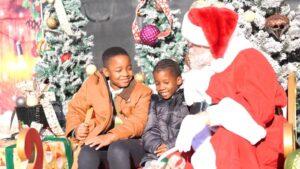 Held at 16101 N. 83rd Ave., Peoria, AZ 85382, this special holiday event is designed to ensure local families experience a joyful and stress-free holiday season. More than 2500 toddlers, teens, and families are expected to benefit from free toys, holiday meals, and festive activities.
Held at 16101 N. 83rd Ave., Peoria, AZ 85382, this special holiday event is designed to ensure local families experience a joyful and stress-free holiday season. More than 2500 toddlers, teens, and families are expected to benefit from free toys, holiday meals, and festive activities.
“Our goal has always been simple—make sure families don’t have to worry about whether there will be food on the table or gifts under the tree on Christmas morning,” said Brian Morris, co-founder of Purposeful Giving Alliance. “Seeing the kids light up with smiles, shopping for toys with an Elf, jumping in bounce houses, and feeling celebrated—that’s what drives us all year long.”
The Day of Giving transforms the Peoria Sports Complex into a vibrant holiday village, complete with:
- Free toy distribution, including a special “shop with an Elf” experience for children
- Holiday meals for families
- Bounce houses and festive activities
- Community engagement with the Peoria Police and Fire Departments
- Support from local leaders, including Mayor Jason Beck, who has donated to support the event
In 2024, the Annual Day of Giving served more than 300 families, creating an unforgettable day filled with hope, kindness, and meaningful connection through the support of volunteers, sponsors, and community partners.
“This event is about more than giving—it’s about dignity, trust, and reminding families they are not alone,” Morris added. “When the community comes together like this, it creates something truly powerful.”
 Purposeful Giving Alliance was founded by Brian Morris, a dedicated community advocate, and David Bell, a passionate supporter of family well-being. What began as a shared vision to address unmet needs in Peoria has grown into a nonprofit organization focused on breaking down financial barriers, fostering unity, and inspiring purposeful giving across Arizona.
Purposeful Giving Alliance was founded by Brian Morris, a dedicated community advocate, and David Bell, a passionate supporter of family well-being. What began as a shared vision to address unmet needs in Peoria has grown into a nonprofit organization focused on breaking down financial barriers, fostering unity, and inspiring purposeful giving across Arizona.
Since its founding, the organization has expanded beyond a single holiday event to offer multiple year-round initiatives, all rooted in its core principles of empowerment, transparency, trust, and authentic connection.
“Our dream is to take this model into more neighborhoods,” said Morris. “Whether it’s back-to-school season or the holidays, no family should feel forgotten during times that matter most.”
For more information, volunteer opportunities, or sponsorship inquiries, please contact Purposeful Giving Alliance https://purposefulgivingalliance.org/day-of-giving/ or call Brian Morris at (602) 299-8162 or email brian@purposefulgivingalliance.org.
Brophy/Xavier Takes Team Title as 145 Students From 25 Clubs Compete in Mesa

The future of pickleball in Arizona took a major step forward Dec. 6 & 7, 2025, when 145 athletes from 25 high schools converged on Mesa’s Dink & Dine Pickle Park for the inaugural Arizona High School Pickleball Championships. Presented by HonorHealth and powered by PURE Pickleball & Padel, the USA Pickleball-certified and Sporfie-livestreamed event included five championship divisions and crowned Brophy/Xavier the overall high school state champion, highlighting the rapid growth of organized youth participation in pickleball.
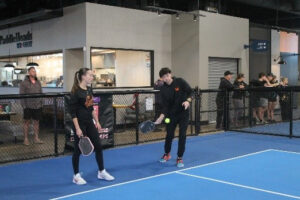 Brophy/Xavier secured the top team score of 26 points after two full days of fierce competition, with Tempe’s Corona del Sol High School taking second, with 24 points, and Mesa’s Mountain View High School claiming third, with 19 points. Horizon Honors in Phoenix, Payson High School and Mesa’s Red Mountain High School rounded out the top six participating schools, racking up 14, 12 and 10 points, respectively.
Brophy/Xavier secured the top team score of 26 points after two full days of fierce competition, with Tempe’s Corona del Sol High School taking second, with 24 points, and Mesa’s Mountain View High School claiming third, with 19 points. Horizon Honors in Phoenix, Payson High School and Mesa’s Red Mountain High School rounded out the top six participating schools, racking up 14, 12 and 10 points, respectively.
“It was a privilege to coach these kids, many of whom hadn’t started playing the game until this year,” said Xavier/Brophy Coach Paul Shoen, whose team scored Joola equipment and a one-year club sponsorship along with the state title. “Most of them had a tennis or other competitive sport background, so they were all able to dig deep. Epic battles and nail-biters all weekend. By bringing pickleball to the high schools, PURE is pushing the Arizona talent even further. Everyone is now on notice, and next year the level of competition will be wild. I told my players that we will now be drilling all year long.”
Top finishers across other championship divisions included:
Girls Doubles
- Gold – Makenna McLachlin & Ava Shoen – Xavier College Prep
- Silver – Vicki Westover & Lindsey Lees, Red Mountain
- Bronze – Gabby Dupnik & Maya Solomon, Horizon Honors
Boys Doubles
- Gold – Santiago Morales & Hogan O’Malley – Corona del Sol
- Silver – Chace Marlor – PURE Academy & Bryce Marler – Mountain View
- Bronze – Colin St. Hilaire & Dhruva Vignesh – Brophy
Mixed Doubles
- Gold – Erin Clark & Hogan O’Malley – Corona del Sol
- Silver – Ava Shoen – Xavier College Prep & Colin St. Hilaire – Brophy
- Bronze – Mollie White & Maddox Tompkinson – Red Mountain
Girls Singles
- Gold – Maya Solomon, Horizon Honors
- Silver – Ava Shoen – Xavier College Prep
- Bronze – Erin Clark – Corona del Sol
Boys Singles
-
- Gold – Brody Rosselli – Payson
- Silver – Roman Anderson – Mountain View
- Bronze –
- Bentley Halvorsen – Mountain View
Stephanie Newton, Director of PURE Pickleball & Padel, remarked, “This weekend surpassed everything we had hoped for—the level of competition was remarkable.”
The students demonstrated impressive intensity, skill, and good sportsmanship. She shared her enthusiasm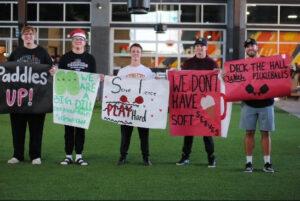 for tracking the development of these athletes as PURE advances its plans to grow Arizona High School Pickleball, including launching regional leagues next spring and establishing additional high school pickleball clubs in 2026.
for tracking the development of these athletes as PURE advances its plans to grow Arizona High School Pickleball, including launching regional leagues next spring and establishing additional high school pickleball clubs in 2026.
Sporfie, a popular live-streaming platform and one of the event’s major sponsors alongside USA Pickleball, streamed live coverage from the Championship Court and six additional courts throughout the weekend, giving family members, friends and supporters statewide a chance to follow all the action in real time. Streamed matches are available to rewatch at no cost, and event coverage and replays are viewable at sporfie.com/azhspb.
Additional event sponsors who made the inaugural Arizona High School Pickleball Championships possible included Caliber Co., Joola Pickleball, RacketPro, Pickleheads, Pita Jungle, Protein House, Raising Cane’s, Tosi Snacks, Flick Weight, Franklin Pickleball, Crush Pickleball, and Andrei Daescu.
 After seeing the success and enthusiasm surrounding the state championships firsthand, USA Pickleball also finalized its decision to launch a new high school division as part of its “Golden Ticket Events” series in 2026. PURE Pickleball & Padel also made a groundbreaking announcement of its own over the weekend, unveiling plans for PURE Academy, a youth and adult training program that will launch its first location at Dink & Dine Pickle Park in January. The announcement followed the Girls Doubles Medal Ceremony, with the PURE team surprising Director Stephanie Newton with a reveal of the “PickleBus,” a custom Volkswagen ID. Buzz that will function as a mobile unit, bringing coaching, equipment and supplies to students and high schools statewide.
After seeing the success and enthusiasm surrounding the state championships firsthand, USA Pickleball also finalized its decision to launch a new high school division as part of its “Golden Ticket Events” series in 2026. PURE Pickleball & Padel also made a groundbreaking announcement of its own over the weekend, unveiling plans for PURE Academy, a youth and adult training program that will launch its first location at Dink & Dine Pickle Park in January. The announcement followed the Girls Doubles Medal Ceremony, with the PURE team surprising Director Stephanie Newton with a reveal of the “PickleBus,” a custom Volkswagen ID. Buzz that will function as a mobile unit, bringing coaching, equipment and supplies to students and high schools statewide.
Many student athletes who participated in the Arizona High School Pickleball Championships expressed excitement over the sport’s explosive popularity and growth.
“Playing in the first-ever high school pickleball state championship is something my team and I are truly honored to be part of. Competing on this stage and seeing the sport grow has been incredible, and I can’t wait to see what the future holds for high school pickleball in Arizona. I also want to thank our head coach, Mr. Ray, for everything he’s done for our team, along with Mr. Warner, Mr. Berk and Mrs. Newton from PURE, for their efforts to establish Arizona High School Pickleball and for organizing the state championships tournament.”
honored to be part of. Competing on this stage and seeing the sport grow has been incredible, and I can’t wait to see what the future holds for high school pickleball in Arizona. I also want to thank our head coach, Mr. Ray, for everything he’s done for our team, along with Mr. Warner, Mr. Berk and Mrs. Newton from PURE, for their efforts to establish Arizona High School Pickleball and for organizing the state championships tournament.”
The success of the inaugural Arizona High School Pickleball Championships provided further evidence of pickleball participation rising sharply among young players, driven in part by PURE Pickleball & Padel’s efforts to build and shape the next generation of competitors across the state.
For more about PURE Pickleball or to learn more about starting a new high school pickleball club, email info@purepickleball.com or subscribe for updates at purepickleball.com.
The Public is Invited to Watch and Judge the Final Competition
from 10:00 a.m. to 6:00 p.m. Saturday, Dec. 6 at Harley-Davidson of Scottsdale
Arizona Bike Week, the premier motorcycle rally in the Southwest, is gearing up for an electrifying music showdown as ten local bands compete for four prized performance slots at the HandleBar Saloon during the upcoming rally at WestWorld of Scottsdale, April 8 – 12, 2026.
The public is invited to come out to this FREE event and cast their votes at the final competition, which will take place from 10:00 a.m. to 6:00 p.m. Saturday, Dec. 6 at the iconic Harley-Davidson of Scottsdale, located at 15656 N Hayden Rd, Scottsdale, AZ 85260.
Arizona Bike Week receives well over a hundred inquiries each year from talented bands eager to perform at the rally. The Rock Out to AZ Bike Week contest was created to address this overwhelming response and showcase the state’s diverse musical talent. This will be the third annual event and producers are expecting around 2,000 in attendance.
 The ten Valley bands that will be competing are Bad Reputation, BadJune, Brownedog Blues Band, Doubleblind, Great Black Swamp, Last Train to Juarez, Magnum Axxe, Miss Conduct, Plum and Vertigo. These popular, local bands have already made it through the first round of online voting, which started with 24 bands, and are now moving onto the finals.
The ten Valley bands that will be competing are Bad Reputation, BadJune, Brownedog Blues Band, Doubleblind, Great Black Swamp, Last Train to Juarez, Magnum Axxe, Miss Conduct, Plum and Vertigo. These popular, local bands have already made it through the first round of online voting, which started with 24 bands, and are now moving onto the finals.
They will compete for the audience’s favor, with attendees having the unique opportunity to vote in person for their favorite acts.
Event-goers can expect an exciting day of music, motorcycles, and more. Each band will showcase its talent with a 20-minute set, and voting will be conducted exclusively in person. Each attendee can vote one time, for up to four bands.
In addition to the musical showdown, the event will feature food trucks, a bar, a custom bike show, an indoor scavenger hunt, a bikini bike wash and a chance to win a $1,500 gift card – ensuring a vibrant atmosphere for both music and motorcycle enthusiasts.
Lisa Cyr, event producer of Arizona Bike Week, expressed her enthusiasm for the competition, stating, “Rock Out to AZ Bike Week has become a cornerstone in our efforts to celebrate and support the incredible musical talent that Arizona has to offer. This competition provides a stage for local bands and allows our audience to actively participate in shaping the entertainment lineup for Arizona Bike Week. We can’t wait to see which bands will rock the stage this year.”
Arizona Bike Week invites everyone to come out and experience the energy, passion, and talent of the local music scene. Rock Out to AZ Bike Week promises to be an unforgettable event, showcasing the best of Arizona’s musical talent and adding a dynamic element to the upcoming rally.
Rock Out to AZ Bike Week is a free event, but if you’d like to learn more about Arizona Bike Week or purchase tickets to watch these winning bands and the headline concerts at the rally in April, please visit: https://azbikeweek.com/
For more information about Rock Out to AZ Bike Week, please be sure to follow Arizona Bike Week on Instagram and Facebook.
https://www.facebook.com/
https://www.instagram.com/
For more information on Arizona Bike Week, call (480) 644-8191 or visit www.AZbikeweek.com.
In addition to the stunning fall leaves, the Arboretum is hosting a number of enjoyable events from late November through December, including Nature Play for Kids, Yoga in the Garden and visits from Jolly St. Nick

Here’s some great news for fans of fall foliage: you don’t have to travel to New England in order to see autumn trees at the height of their colorful splendor.
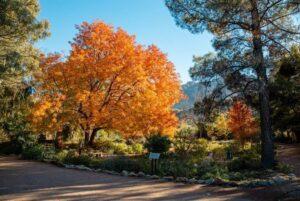 Instead, make the scenic drive to Boyce Thompson Arboretum, 37615 E Arboretum Way, Superior, AZ 85173 Superior, where Mother Nature is preparing to put on an incredible autumnal show of reds, oranges, yellows and golds.
Instead, make the scenic drive to Boyce Thompson Arboretum, 37615 E Arboretum Way, Superior, AZ 85173 Superior, where Mother Nature is preparing to put on an incredible autumnal show of reds, oranges, yellows and golds.
“The three peak weeks of fall colors are from the end of November to the beginning of December, and the scenery here is truly magical” said Kim Gray, Executive Director of the Boyce Thompson Arboretum. “Because Black Friday is traditionally our busiest day for visitors who are here to see the gorgeous fall foliage, we are staying open late Thanksgiving weekend, with the last admission at 9 p.m.”
For visitors who would like their four-legged friends to experience the Arboretum too, Gray said well-behaved dogs on a 6-foot or shorter leash are welcome to visit.
“We are also hosting a Food Drive during late November and December,” Gray said. “Visitors can bring shelf-stable foods like tuna, canned chicken, pasta, soup, chili, peanut butter and canned vegetables, and everything will be donated to the Superior Food Bank.”
In addition to admiring and photographing the beautiful fall leaves, visitors are welcome to take advantage of a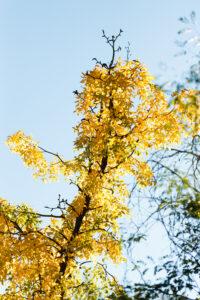 number of late fall and winter programs and events at the Arboretum – including visits from Santa Claus. They are:
number of late fall and winter programs and events at the Arboretum – including visits from Santa Claus. They are:
Glass in Flight – This immersive outdoor sculpture exhibit was created by renowned Tucson-based artist Alex Heveri. Featuring over 17 dazzling sculptures made of hand-cut, hand-faceted Dalle de Verre glass set in powder-coated steel, this exhibit captures the magic of nature’s tiniest pollinators—blown up to monumental scale. Walk among monarchs, beetles, and hummingbirds that radiate color and light. Now through January 30, 2026, during regular hours.
Glass in Flight at Night – Come experience the dazzling Glass in Flight exhibit at night. With strategic lighting and nightfall as the backdrop, these larger-than-life glass insects take on a whole new dimension—radiant, surreal, and unforgettable. Watch butterflies shimmer, dragonflies pulse with color, and beetles gleam like jewels in the dark. From now to January from 5 p.m. to 10 p.m. There will be no evening hours on November 8.
Meet the Artist – Glass in Flight – Come meet Alex Heveri, the artist behind Glass in Flight 2. Heveri, a Tucson-based artist and sculptor, will talk about the process and inspiration behind her larger-than-life glass pollinators. Guests will be guided on a tour of some of the pieces in the Glass in Flight 2 collection and have a chance to ask Heveri questions about the exhibit. November 15 from 5 p.m. to 7 p.m. and November 16 from 10 a.m. to 12 p.m.
Nature Play – Unplug and reconnect with Nature in the Children’s Garden, where families can escape the screens and dive into the wonders of the great outdoors. Bring your kids to explore, play and learn using seasonal and nature-themed activities for families of all ages and abilities. Every Saturday, November 15, 22 and 29, and December 6, 13 and 20 from 10 a.m. to 12 p.m.
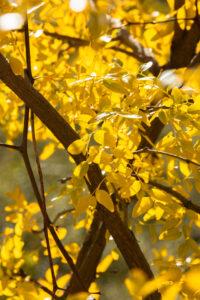 Forest Bathing – Also known as Shinrin-yoku, forest bathing is the practice of spending time in nature for the purpose of enhancing health, wellness, and happiness. During class, participants will be led on a 2-1/2 hour walk through the century-old trees of the Arboretum with a series of guided “invitations”, closing with a tea ceremony. December 6 from 9 a.m. to 11:30 a.m. and from 12:30 p.m. to 3 p.m.
Forest Bathing – Also known as Shinrin-yoku, forest bathing is the practice of spending time in nature for the purpose of enhancing health, wellness, and happiness. During class, participants will be led on a 2-1/2 hour walk through the century-old trees of the Arboretum with a series of guided “invitations”, closing with a tea ceremony. December 6 from 9 a.m. to 11:30 a.m. and from 12:30 p.m. to 3 p.m.
Paint at the Arboretum – Prickly Pear Cactus – Unleash your creativity amongst the inspiring beauty of Boyce Thompson Arboretum. Under the guidance of artist Carla Keaton, you will paint a unique masterpiece to take home. Whether you’re an experienced painter or picking up a brush for the first time, all skill levels are invited to join. All supplies are provided. November 15 from 2:30 p.m. to 4:30 p.m.
Yoga in the Garden – Relax and restore in this all-levels yoga class held outside in the tranquil setting of the Arboretum. During this class, participants are shown how to mindfully move through gentle postures with breath awareness to promote relaxation, flexibility, and circulatory health. November 22, December 10, and December 20 from 9 a.m. to 10 a.m.
Santa visits the Arboretum – Santa is coming to the Arboretum! Stop by the Smith Greenhouses and get a photo with Santa. Bring your family, including four-legged family members, for fun holiday photos. Digital copies will be available for purchase. December 6 and 7 from 10 a.m. to 2 p.m.
Holiday Hangout – Celebrate the season at the Holiday Hangout. Shop local vendors and find one-of-a-kind gifts at our holiday marketplace. Treats and merchandise will also be available for purchase. December 6, 13, 14, 20 and 21 from 10 a.m. to 3 p.m.
Branching Out Speaker Series – Hummingbirds, Our Avian Jewels – Arizona is the “hummingbird capital” of the United States, with more species than any other state. In this program by nature photographer Cindy Marple, attendees will learn about the large hummingbird family and their unique lifestyles, as well as how to identify the local species in the Valley. December 12 from 3:30 p.m. to 4:30 p.m.
Holiday Floral Design – Celebrate the holiday season by handcrafting a beautiful centerpiece filled with fresh-cut evergreens and vibrant flowers. With the guidance from the instructor, you will design a one-of-a-kind arrangement perfect for your holiday table. No experience necessary; this class is open to all skill levels. Ages 18 and up. December 13 from 10 a.m. to 12 p.m.
To check out the event calendar for late fall and winter, which includes information about ticket prices and, if applicable, how to register, please visit https://btarboretum.org/events/.
For more information on Boyce Thompson Arboretum – located at 37615 E Arboretum Way
Superior, AZ 85173 – and their upcoming events, memberships, or conservation initiatives, visit www.btarboretum.org, call 520.689.2723, or connect with them on Facebook, Instagram or X (formerly Twitter).
ABOUT BOYCE THOMPSON ARBORETUM:
Boyce Thompson Arboretum is Arizona oldest and largest botanical garden, as well one of Arizona’s top tourism draws. Since being founded by mining magnate William Boyce Thompson in 1924, the Arboretum has blossomed into a total 372 acres and nearly five miles of trails, 135 acres of gardens and a total of 20,000+ desert plants from the United States, Mexico, Australia, Madagascar, India, China, Japan, Israel, South America, the Middle East, Africa, the Mediterranean, and the Arabian Peninsula. For more information, visit www.btarboretum.org.
Featured Editorials
By Councilmember Julie Pace

Julie Pace. Photo Credit: paradisevalleyaz.gov
For approximately ten years, our town has discussed the need for a Paradise Valley Police Training Center and Shooting Range. The Council even funded plans to make this physical project a reality.
The actual funding of the Police Training Center, however, kept getting put off, while the Council worked to pay down the required contributions to the state pension fund. The time is now to move forward with this important physical project.
The PV Police Training Center will improve and strengthen skill sets, provide space for a variety of classroom and physical training sessions, and assist with recruiting the best officers.
We are the safest community in the State of Arizona and we need to support the resources required to maintain that goal.
The training center will integrate space for officers to complete required shooting certifications, instead of traveling to Ben Avery Shooting range, a long drive and time commitment. Phoenix police departments have sound-proofed shooting facilities at each of their precincts. PV has none. And yes, any shooting range will be completely sound-proofed and residents will absolutely not hear any of it.
We have some financial support from the State Legislature with the leadership of Sen. Carine Werner. In 2025, Sen. Werner introduced and worked with colleagues to pass a bill to provide $150,000 to assist with the process to design and build a gun range behind the PV Police Department.
New News! Big Kudos to Sen. Carine Werner who introduced a 2026 bill in the state legislature that seeks $2.5 million to get a PV Police Training Center built in PV. Join us in supporting this important project for PV that will have lasting impact for a safe community for decades into the future.

Photo Credit: Scottsdale Progress
January transforms the Valley into Arizona’s cultural epicenter, offering art enthusiasts and culture seekers an impressive lineup of world-class events. Whether you’re a serious collector or simply appreciate creativity in all its forms, this month delivers something extraordinary across Scottsdale, Phoenix, and Tempe.
Parada del Sol & Trail’s End Festival (January 31, Scottsdale)
This over 70-year Scottsdale tradition celebrates the city’s Western heritage with a festival that captures the spirit of the Old West. Held in Old Town Scottsdale, this beloved event connects residents and visitors to the cultural roots that shaped Scottsdale’s identity, featuring Western art, crafts, and entertainment that honor Arizona’s frontier legacy. The Parada del Sol has been a cornerstone of Scottsdale’s cultural calendar for generations, reminding us that beneath the city’s modern sophistication lies a rich cowboy heritage. From authentic Western artwork to traditional crafts and performances, this festival offers a uniquely Arizona cultural experience that you won’t find anywhere else.
Million Dollar Quartet (Through January, Phoenix)
Phoenix Theatre Company brings the magic of rock and roll’s most legendary recording session to life with Million Dollar Quartet. Inspired by the historic 1956 impromptu jam session that brought Elvis Presley, Johnny Cash, Carl Perkins, and Jerry Lee Lewis together at Sun Records in Memphis, this electrifying musical features iconic hits including “Blue Suede Shoes,” “Great Balls of Fire,” and “Folsom Prison Blues.” Located at 1825 N. Central Avenue, the production captures a moment when four future legends created musical history. Tickets start at $60 for an unforgettable evening celebrating American music heritage.
Tempe Blooms (January 24-25, Tempe)
Downtown Tempe welcomes spring early with this vibrant festival celebrating flowers, gardens, and outdoor living. The perfect antidote to winter doldrums, Tempe Blooms showcases local nurseries, landscape designers, and garden artists while offering workshops and demonstrations for green thumbs and aspiring gardeners alike. The festival transforms downtown Tempe into a botanical showcase, proving that January in Arizona means year-round growing season and outdoor entertainment.
Scottsdale Waterfront Fine Art & Wine Festival (January 30 – February 1, Scottsdale)
Capping off the month, this 15th annual juried art festival along the Scottsdale Waterfront combines visual arts with Arizona’s growing wine culture. Over 100 artists showcase striking bronzes, dazzling glass creations, breathtaking photography, and handcrafted jewelry alongside curated wine tastings and live music. The scenic canal setting creates an elegant atmosphere for discovering new artists while enjoying Arizona’s beautiful winter weather.
Barrett-Jackson Collector Car Auction (January 17-25, Scottsdale)
While technically automotive-focused, Barrett-Jackson has evolved into a nine-day cultural phenomenon at WestWorld that celebrates American craftsmanship, design, and history. The event kicks off with the Rock The Block concert on January 16, featuring country superstar Cole Swindell and Chase Rice. Beyond the world-class collector cars crossing the auction block, Barrett-Jackson showcases custom paint artistry, vintage automotive design, and the mechanical artistry that defines American car culture. It’s a celebration of form, function, and the creative passion that transforms vehicles into rolling works of art.
January proves once again why the Valley has earned its reputation as the West’s premier destination for arts and culture. With events running throughout the month across multiple cities, there’s never been a better time to explore the creative heart of the desert.
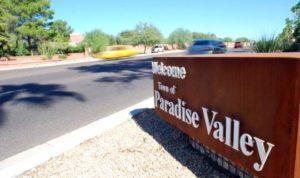
Paradise Valley Town Council is changing how it distributes community service funding, and residents should understand what this means for local nonprofit organizations and the broader community. At its December 11 work session, the council heard a proposal to adopt a hybrid approach combining requests for proposals with needs-based assessment for allocating these funds.
What’s Being Considered
For fiscal year 2025, the council has allocated $265,000 to community services, though that number is somewhat misleading. The town combines funds for homelessness with the general community services fund, and for the past two fiscal years, the council earmarked $200,000 to the Maricopa Association of Governments homeless initiatives. If that same amount goes to MAG this year, only $65,000 remains for other community organizations.
The proposed process would involve two council members selected by Mayor Mark Stanton working with the town manager’s office to review applications. Their recommendations would then go to the full council for approval. This represents a return to elements of the town’s pre-2021 system, which relied solely on requests for proposals from 2015-2020.
Why the Change
From 2021 to present, the town moved to a needs-based assessment approach. The hybrid model aims to balance competitive grant applications with strategic assessment of community needs. As Councilwoman Anna Thomasson emphasized during the session, there’s growing interest in documenting how funding directly benefits Paradise Valley residents rather than the broader region.
This represents a shift in philosophy. Mayor Stanton acknowledged the importance of considering Paradise Valley’s position in the greater community, noting “we can’t forget that we’re part of a bigger community and that we should be part of a solution-driven space” when discussing groups like Central Arizona Shelter Services that serve the broader Valley.
What Residents Should Know
Paradise Valley has supported community service agencies since 1985, with 40 different organizations receiving funding over the years. Recent consistent recipients include MAG homeless initiatives, Duet Partners in Aging, and Central Arizona Shelter Services. Others like Arizona Friends of Foster Children, Voices for CASA Children, Scottsdale Unified School District Foundation, and McCormick-Stillman Ranch Railroad Park have also benefited.
Here’s what makes this discussion significant: Paradise Valley operates from an exceptionally strong financial position. The town’s 2025 fiscal year saw revenues of $58 million against expenses of $36 million, resulting in a $22 million excess contributed to general fund strategic reserves. The town derives about 35% of revenue from resort taxes, 15% from construction sales tax, 10% from investment income on strategic reserves, and under 10% from state shared revenue, a revenue diversity that gives the town substantial financial flexibility that many neighboring communities lack.
The question isn’t whether Paradise Valley can afford to support community services: it clearly can. The question is philosophical: Should an affluent town of roughly 14,000 residents primarily fund services that directly benefit its own population, or should it contribute to regional solutions for challenges like homelessness that don’t respect municipal boundaries?
The hybrid approach may represent a reasonable compromise, allowing both competitive grant applications and strategic needs assessment. However, residents should pay attention to how this plays out in practice. Will the focus on demonstrating direct town benefits squeeze out worthy regional causes? Or will Paradise Valley continue recognizing its role in supporting the broader community ecosystem?
As the council moves forward with implementing this new process, residents interested in how their tax dollars support community services should attend council meetings or provide input to ensure the town strikes the right balance between local impact and regional responsibility.
By Carla
61 Year Scottsdale Resident & Preserve Pioneer

REALLY?!
Once again, the Goldwater Institute thinks it knows Scottsdale better than its residents.
A recent editorial from the Institute’s CEO Victor Riches touts an unnecessary hospital rezoning by Banner Health that will reduce the quality of Scottsdale’s healthcare, citywide.
Riches’ wrongheaded position comes after a judge recently dismissed a lawsuit in which the Institute sought to derail Prop 490, a voter approved measure to invest in Scottsdale’s parks; protect our Preserve, and provide additional funding for our Fire and Police Departments. I was proud to serve as Campaign Manager for the Yes on 490 effort.
The Institute never considered the consequences of defunding the Preserve, city parks, and public safety, or the time and money it costs Scottsdale to defend the will of its voters. Instead, they have doubled down and appealed the ruling!
Now apparently they’re also jumping into another local issue without considering the consequences – the quality of healthcare in Scottsdale. Riches’ editorial doesn’t account for the shortage of doctors and nurses and the fact that adding another, unnecessary, hospital would spread resources too thin, hurting patients and raising costs. He fails to mention that Scottsdale already has an excellent healthcare system and Banner’s plans could break what doesn’t need fixing.
Most of us live in the real world where lives are at risk when a hospital doesn’t have enough staff or a Level One Trauma Unit. Personally, as a senior with a heart condition, I need to count on quality healthcare.
Years ago, I helped champion the creation of the McDowell Sonoran Preserve. It has become one of the things that make Scottsdale special. Scottsdale’s current healthcare system, powered for more than 60 years by HonorHealth, is another. We shouldn’t allow an outside entity to lessen our quality of life.
By Alexander Lomax
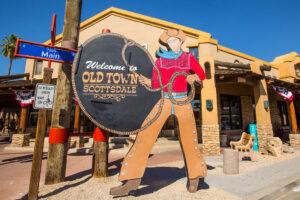
Photo Credit: YourValley.net
In a bit of a surprise move, Mayor Lisa Borowsky has called a special City Council meeting for January 7 to discuss creating a Downtown Task Force focused on Old Town Scottsdale. According to a letter to the Old Town business community, the proposed task force would “evaluate and refine the Downtown Character Area Plan and current marketing efforts”, with presentations from a historian, tourism consultant, and business stakeholders.
The timing is curious. Just weeks ago, the council deadlocked on a marketing contract with the James Agency that would have promoted Old Town, leaving approximately $1.3 million in bed tax revenue unused while Old Town businesses wonder who’s advocating for their interests. As Councilwoman Maryann McAllen observed, the task force proposal appears to be a direct response to that controversial impasse.
But is another government task force really what Old Town needs right now? Or is this conveniently timed political theater designed to distract from what’s been an extraordinarily contentious year at Scottsdale City Hall?
Let’s examine the pattern. Since taking office in 2025, the conservative-majority council has generated one firestorm after another. In January, they repealed the city’s sustainability plan that took three years and $2.2 million to create. In February, they voted 5-2 to defund the city’s Office of Diversity, Equity and Inclusion despite hours of passionate public testimony against it. In December, they voted 4-3 to eliminate one of two public comment periods at council meetings, moving the remaining period to the end of meetings when fewer citizens can participate.
Former Mayor David Ortega suggested that the council is “seldom at City Hall”, while Councilwoman Kathy Littlefield described unprecedented “animosity” and “vitriol” in her 10 years on council. Three council members even reported Mayor Borowsky to county investigators over alleged campaign finance violations related to a parking garage dispute, what became known as “Parkingate.”
Against this backdrop of controversy, dysfunction, and genuine animosity among elected officials, suddenly we need a task force to study Old Town? It’s hard not to see this as a convenient pivot from the chaos. Creating a task force allows the council to look productive and business-friendly without actually committing resources or making hard decisions about Old Town’s future.
Here’s the uncomfortable truth: Old Town doesn’t lack for plans, character studies, or visioning documents. What it lacks is political consensus and follow-through. The council just couldn’t agree on a marketing contract because of cost concerns and political divisions. If they can’t fund basic marketing, what makes anyone think they’ll implement whatever recommendations a task force produces?
Old Town business owners don’t need more meetings or studies. They need a functional city council that can agree on priorities, fund marketing consistently, and stop generating negative headlines that make Scottsdale look like a political circus rather than a premier destination. They need leaders focused on economic development rather than culture war battles over DEI offices and sustainability plans.
The real question isn’t whether Old Town needs a task force. It’s whether the City Council is capable of governing effectively enough to act on whatever recommendations emerge. or whether this is just another distraction from a contentious, chaotic year that’s seen Scottsdale’s reputation suffer while elected officials fight amongst themselves.
By Mike Welborn
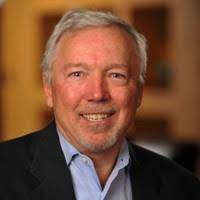
I am proud to be a Scottsdale resident and to serve as Chair of the HonorHealth Board of Directors. Nearly twenty years ago, I joined the Scottsdale Healthcare Board, and since then have taken seriously the responsibility of safeguarding our community’s health and well-being while ensuring every patient receives timely, high-quality care. HonorHealth has upheld this commitment for more than 60 years in Scottsdale, and Mayo Clinic has likewise played a vital role in delivering exceptional healthcare to the Northeast Valley.
Yet for several years, we have watched Banner Health advocate for rezoning land they purchased—land that does not currently allow for a hospital use—despite clear evidence that Scottsdale’s hospital needs are already being met.
The reality is that Scottsdale is fortunate to have outstanding hospitals and healthcare providers. By nearly every objective measure, we enjoy access to some of the best healthcare options in Arizona. HonorHealth and Mayo Clinic have long delivered comprehensive services with top-tier quality ratings. HonorHealth’s Thompson Peak Medical Center—just three miles from the proposed Banner site—already has an expansion planned, including new beds and operating rooms, to responsibly meet future demand without any need for rezoning.
In fact, Scottsdale already has three hospitals and one of the highest concentrations of hospital beds per 1,000 residents in Arizona—second only to Sun City and Sun City West. This means residents and visitors are well-served, and do not face the access challenges or lack of hospital services that justify new hospital construction in other parts of the Valley.
At first glance, adding another hospital might seem positive: more access, more choices, and increased competition. But with hospitals, the proof is in the patient outcomes—and more is not always better. When too many hospitals compete for the same limited pool of physicians, nurses, and allied health professionals, resources become fragmented. This can lead to higher costs and, ultimately, diminished quality and consistency of care. The Scottsdale Firefighters Association has raised similar concerns, emphasizing that oversaturation does not improve patient outcomes and can even compromise service availability to the local community.
Emergency departments illustrate this challenge clearly. Emergency department throughput—the time it takes for patients to be seen, treated, and admitted or discharged—is a critical measure of patient safety. In areas where hospitals cluster too closely, throughput times tend to rise. For example, in downtown Phoenix, where three hospitals operate within a short radius, the median emergency department throughput time at Banner University Medical Center in 2024 was 284 minutes, according to the Centers for Medicare & Medicaid Services. By comparison, HonorHealth’s Scottsdale medical centers averaged 186 minutes during the same period. These differences matter, especially in emergencies where every minute counts.
Beyond healthcare concerns, the proposed rezoning raises serious safety and infrastructure issues. The site is near Scottsdale Airport, and the proposed hospital would include helipads. Increased helicopter traffic in an already busy airspace could create dangerous conflicts with existing airport operations. The Scottsdale Airport Advisory Commission recently voted 5–1 against the rezoning, citing these public safety risks.
Scottsdale residents have also voiced concerns about traffic congestion resulting from the proposed rezoning. The area near Hayden Road and Loop 101 is already experiencing significant development, and adding a 300-bed hospital would only increase strain on local roads and infrastructure. These challenges are especially troubling given that objective measures clearly demonstrate that the hospital is not needed to meet the inpatient needs for current and future Scottsdale residents.
Scottsdale deserves a comprehensive healthcare system that continues to prioritize quality, safety, and collaboration—the very principles HonorHealth has practiced for more than six decades, and which have made our current system a model for the Valley. Our healthcare and EMS network is widely regarded as one of the best, and that is an achievement worth protecting. Rather than creating another divisive community debate, let us focus on preserving what works.
The only party advocating for a rule change to allow an additional, unnecessary hospital is Banner Health. While we respect their business interests and the significant role they play in serving healthcare needs across multiple states, in this instance, the proposal serves their insurance objectives—not the hospital needs of our community.

Campaign Launch Party
Tuesday, January 20, 2026
5:30 – 7:30 pm
Desert Camp Community Center
9260 E Desert Camp Dr, Scottsdale, AZ 85255
Please join us for wine and hors d’oeuvres to celebrate the launch of my campaign for Scottsdale City Council. We look forward to sharing the evening with you and welcoming your support.
Thank you to our Host Committee members:
Councilwoman Maryann McAllen, Former Councilwoman Betty Janik, Former Councilwoman Linda Milhaven, Former Councilman David Smith, John Ainlay, Marlene Reiss and Diana Smith
Hope you can join us on the 20th! — Ethan Knowlden

Photo Credit: PHOENIX Magazine
Arizona’s most ambitious cultural event is returning for its second year, and it’s already shaping up to be bigger and better than its blockbuster debut. Scottsdale Art Week, presented by Scottsdale Ferrari, returns to WestWorld of Scottsdale March 19-22, 2026, and in conjunction with the myriad art galleries in Old Town is helping cement Scottsdale’s position as a premier arts destination in all of the western United States.
The inaugural 2025 edition set the bar remarkably high, drawing 14,000 attendees and 106 galleries from nine countries to the iconic WestWorld venue. The four-day extravaganza generated millions in art sales while showcasing everything from contemporary masterworks to powerful Indigenous art, alongside fashion shows, cultural performances, and immersive installations that transformed the 120,000-square-foot space into a world-class art destination.
For Scottsdale, this event represents far more than another addition to the calendar. It positions the city alongside the nation’s premier art markets and reinforces the Southwest’s growing reputation as a cultural powerhouse. As co-owner Trey Brennen notes, Scottsdale already knows how to host world-class events: the Barrett-Jackson Collector Car Auction, the WM Phoenix Open, the Scottsdale Arabian Horse Show, and MLB spring training all draw massive crowds. Scottsdale Art Week was designed to claim that same marquee status for the visual arts.
The event also benefits from strengthened partnerships with Arizona’s leading cultural institutions. Phoenix Art Museum, the Heard Museum, Scottsdale Museum of Contemporary Art, ASU Art Museum, and the Center for Creative Photography are all continuing their collaboration, while organizers are actively courting additional out-of-state arts organizations to expand the fair’s national reach.
Amy Gause, who serves as director for the 2026 edition, emphasized that metropolitan Phoenix’s status as the nation’s fifth-largest city demands an art event of this caliber. The region boasts a sophisticated collector base and vibrant gallery scene that deserves international recognition, and Scottsdale Art Week delivers exactly that platform.
The fair kicks off with an elegant opening night Vernissage on Thursday, March 19, from 6 to 9 PM, followed by full days of exhibitions Friday through Sunday. With many 2025 exhibitors already committed to returning and booth space filling rapidly, early ticket purchases are recommended.
For art lovers, collectors, and anyone who appreciates world-class cultural events, Scottsdale Art Week has quickly established itself as a must-attend destination that showcases the very best of contemporary art against the stunning backdrop of the Sonoran Desert, and is quickly becoming an integral aspect of the positioning of the city of Scottsdale as a regional mecca for culture.
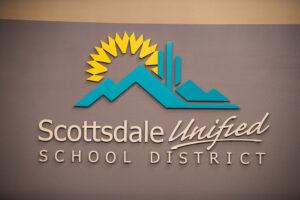
In what now seems to be a recurring theme, Scottsdale Unified School District faces another troubling chapter in its ongoing struggles with employee misconduct. In just the past three months, three district employees have lost their positions over allegations of inappropriate behavior involving minors. This isn’t merely another bureaucratic misstep; it’s a pattern that demands serious attention from parents and taxpayers alike.
The cases are deeply disturbing. Former Cocopah Middle School teacher Michael Gill and Hohokam Elementary School crossing guard Thomas Giorlando were both terminated and charged by police for allegedly possessing child pornography. Meanwhile, Saguaro High School athletic director Lucas Ackerson was permitted to resign following allegations he inappropriately messaged a female student on social media (read our coverage here), though police determined there wasn’t enough evidence to pursue an official investigation.
For our readers, this won’t come as a complete surprise. We’ve documented SUSD’s troubled waters for years, from the Greenburg dossier scandal to governance dysfunction to plummeting academic performance. But this represents something far more serious than political infighting or administrative incompetence. These are allegations involving the safety of children entrusted to the district’s care.
The district deserves some credit for swift action once Ackerson’s case came to light. According to reports, administrators removed him from campus within an hour of the family’s complaint and immediately notified police and the State Board of Education. That’s the right protocol. But it raises an uncomfortable question: how many warning signs were missed before families had to come forward?
SUSD has policies prohibiting staff from communicating with students outside approved platforms like Synergy, district email, and ParentSquare. Yet somehow, an athletic director allegedly found ways around these safeguards. When policies exist but fail to prevent misconduct, the problem isn’t just individual bad actors but potentially systemic oversight failures.
This isn’t about political correctness or culture war distractions. This is about basic child safety. Parents choosing SUSD deserve confidence that the adults supervising their children have been properly vetted, monitored, and held accountable. Three cases in three months suggests something isn’t working in the district’s screening or supervision processes. Whatever political disputes divide the governing board, protecting students from predatory behavior should unite everyone.
Parents, stay vigilant. Talk openly with your children about appropriate and inappropriate adult behavior. Create environments where kids feel safe reporting uncomfortable situations. And demand accountability from SUSD leadership. The district must conduct a thorough review of its hiring, training, and supervision practices to ensure these cases represent isolated failures, not systemic weaknesses.
Where there’s smoke, there’s often fire. Three cases in three months is more than smoke. It’s a five-alarm blaze that demands immediate attention before more children are put at risk.

As the clock ticks down on 2025, Scottsdale, as always, will transform into one of Arizona’s most exciting destinations for New Year’s Eve celebrations. Whether you’re seeking glamorous rooftop parties, elegant dinners, or high-energy dance floors, our city has something for everyone looking to welcome 2026 in style.
W Scottsdale Renaissance Affair
Step into a Bridgerton-inspired wonderland at W Scottsdale’s annual New Year’s Eve party, featuring lavish Renaissance-themed décor, live performers, talented DJs, and a spectacular midnight fireworks show. This stylish indoor and outdoor celebration promises luxe cocktails and vibrant energy from 9 PM until late into the night. With tickets starting at just $50 for those 21 and over, it’s one of Scottsdale’s most accessible upscale parties. VIP table service and cabanas are also available for those wanting an elevated experience.
Keeler’s Neighborhood Steakhouse Gala
Keeler’s Neighborhood Steakhouse is hosting its 6th annual New Year’s Eve Gala from 6 to 11 PM, featuring an extravagant buffet dinner with prime rib carving and crustacean stations, plus bottomless champagne. Guests can enjoy live music from Mercer Lane and dance under the stars on the Starlight Roofdeck Patio before the 10 PM countdown and champagne toast. At $150 per person, it’s an ideal choice for those who want to celebrate and still get home at a reasonable hour.
Caesars Republic Scottsdale Posh Party
For late-night revelers, Caesars Republic Scottsdale takes over both the Romulus Ballroom and Cleopatra Pool for an all-access celebration starting at 9 PM, featuring four hours of prepaid drinks, entertainment from DJ Damien and DJ Nick, and complimentary hors d’oeuvres. With tickets starting around $120, this high-style affair offers multiple areas to mingle and dance the night away until 1:30 AM.
No matter which celebration you choose, Scottsdale delivers an unforgettable New Year’s Eve experience. Book early, as many events are selling out quickly. Here’s to an incredible 2026!

Photo Credit: Arizona Digital Free Press
When 480 Career and Technical Education students gathered at Chaparral High School for the 2025 Future Ready Conference, they weren’t just attending another school event: they were experiencing the kind of transformative educational opportunity that defines excellence in Scottsdale Unified School District.
The full-day conference, presented by SUSD’s CTE department in partnership with Scottsdale Rotary, brought students face-to-face with real-world career pathways across multiple industries. From professional networking workshops and personal branding sessions to specialized tracks in hospitality, finance, engineering, and criminal justice, the event gave students practical skills they can apply immediately. More than 35 Scottsdale Rotary members volunteered as mentors and industry experts, demonstrating the deep community partnerships that strengthen SUSD’s educational mission.
“We are excited that our students had the opportunity to learn directly from community leaders who work in these fields and see how their current studies can translate to careers after high school,” said Chaparral Principal Joshua Pantier. This direct pipeline from classroom to career represents exactly what sets Scottsdale schools apart.
The Future Ready Conference is just one example of SUSD’s nationally recognized CTE programs. The district offers 17 different career pathways spanning nine in-demand fields, from healthcare and engineering to information technology and hospitality. Students can earn industry-recognized certifications and dual enrollment college credits while still in high school, giving them a competitive advantage whether they pursue higher education or enter the workforce directly.
The results speak for themselves. In spring 2025, SUSD CTE students earned an impressive 314 industry credentials across five high schools. The district’s 2024 CTE graduates saw a 77% placement rate in universities, colleges, trade schools, or direct workforce entry—, demonstrating that these programs genuinely prepare students for success beyond graduation.
Academically, SUSD continues to excel across the board. The district ranks number one among all Arizona districts and charter schools serving more than 10,000 students in key academic subjects. With a 98.7% teacher licensure rate and a student-to-teacher ratio lower than the state average, SUSD maintains the high-quality instruction that families expect.
The district’s commitment extends beyond CTE programs. SUSD offers International Baccalaureate programs at multiple schools, a renowned Math and Science Academy, dual language immersion programs, gifted education, and comprehensive athletics and arts opportunities. Recently, five SUSD schools earned Blue Zones Project approval for their commitment to student wellness, including Coronado High School as the district’s first high school to receive this recognition.
For over 128 years, Scottsdale Unified has been delivering premier public education to more than 20,000 students across 30 campuses. Events like the Future Ready Conference aren’t anomalies: they’re emblematic of a district-wide culture that pairs rigorous academics with practical skills, connects students with community leaders, and ensures every student leaves prepared for whatever path they choose.
When students walk away from experiences like resume-building labs, elevator pitch coaching, and networking with professionals, they’re not just learning about careers, but they’re also building the confidence and competence to succeed in them. That’s the Scottsdale Unified difference, and it’s why families continue to choose this district generation after generation.
By Scottsdale Voter
Just in time for Christmas, three-term Councilor and TAAAZE founder Bob Littlefield, delivers a gift to residents: a second lawsuit against the City’s shameful backroom MOU with Axon.
This latest suit goes straight at the outrageous November 17 “compromise” that the Axon Faction, led by unpopular Democrat Solange Whitehead and embattled Mayor Lisa Borowsky, rammed through on a narrow 4-3 vote.
We agree with Bob Littlefield: “It’s illegal to bypass the planning and zoning process with a MOU. Abdicating code enforcement? Wrong. Waiving Axon’s water obligations during drought? Wrong.”
Littlefield notes that the sweetheart deal lets Axon self-certify their massive campus without real city oversight, skips vital zoning hearings, and waives their water promises – all while stealing your 27,000-signature referendum.
While the Axon Faction celebrates the corporate giveaway, enabled by the special-interest “Axon Bill,” Littlefield is once again stepping up to fight for residents, our laws, our water, and our voice.
Residents: Rally behind TAAAZE. This fight isn’t over.


Coach Kenny Dillingham
tempe, asu,
The past week has been an emotional rollercoaster for Sun Devil Nation. When Michigan fired Sherrone Moore and Kenny Dillingham’s name immediately shot to the top of their wish list, every ASU fan felt that familiar dread; the sinking feeling that comes when blue-blood programs start circling our best asset.
But today, we can finally exhale. Coach Dillingham is staying home.
The new five-year deal, averaging $7.5 million annually with an $11 million staff salary pool, is more than just a contract; it’s a statement. ASU administration heard Dillingham’s message loud and clear: if you want to compete in the new era of NIL and revenue sharing, you need to put your money where your mouth is. And they did.
Let’s be honest…Michigan came calling with serious interest and the potential to pay millions more. For most coaches, that’s a no-brainer. But Kenny Dillingham isn’t most coaches. He’s a Scottsdale native, an ASU alum, and someone who became visibly emotional when asked what makes coaching here special. “I love this place,” he said through tears. “It’s a special place to me.”
That emotion is exactly why we needed him to stay. In just two seasons, Dillingham has transformed this program from NCAA sanctions and three-win seasons into Big 12 champions headed to the College Football Playoff. He’s 19-7 over the past two years, found diamonds like Cam Skattebo in the transfer portal, and turned Sam Leavitt into Big 12 Newcomer of the Year. He’s not just rebuilding ASU football; he’s making it relevant again.
The Michigan interest was real and terrifying. When your coach’s name trends on betting markets for another job, when national media speculates about him leaving, when even sports new media magnate Dave Portnoy publicly advocates for Michigan to hire him…those aren’t just rumors. They’re existential threats to everything we’ve built.
But Dillingham never wavered. He used the leverage to secure resources for his staff and players, then recommitted to the Valley he calls home. His message throughout was consistent: “I was never leaving. This is home.”
For Sun Devil fans who’ve endured years of mediocrity, coaching turnover, and watching Arizona celebrate our failures, this moment feels like vindication. We have a championship coach who wants to be here, an administration willing to invest, and a future that suddenly looks incredibly bright.
Michigan will have to look elsewhere. Meanwhile, we’re preparing for the Sun Bowl with our coach, our generational coach, firmly in place.
Forks up, Devil Nation. The future is maroon and gold.
By George Khalaf

I am humbled and grateful to announce the latest round of endorsements for my campaign for Arizona State House in LD3.
These leaders represent patriotism, clarity, conservatism, America-First ideals and common sense. They make our state great. They reflect the voices of our grassroots, who will always be the backbone of this campaign. I’ve been proud to help elect some of these individuals. And I’m proud to call all of them friends.
David Rhodes, Yavapai County Sheriff
David Farnsworth, Arizona State Senator, LD10
Lisa Fink, Arizona State Representative, LD27
Justin Olson, Arizona State Representative, LD10
Michael Way, Arizona State Representative, LD15
Kathy Littlefield, Scottsdale City Councilwoman
Gayle Earle, Fountain Hills Councilwoman
Allen Skillicorn, Fountain Hills Councilman
Dorean Taylor, Mesa City Councilwoman
Jim O’Connor, Former Arizona Corporation Commissioner
Phil Goode, Former Mayor of Prescott
Jill Norgaard, Former Arizona State Representative
Jacqueline Parker, Former Arizona State Representative
Barbara Parker, Former Arizona State Representative, East Valley Conservative Leader
Robert Scantlebury, East Valley Conservative Leader; Former Republican Candidate for Arizona State Senate, LD9
Shiry Sapir, Former Candidate for Superintendent of Public Instruction,
Kathleen Winn, Radio Host, Chair of the Pima County Republican Party
This powerhouse group joins my early endorsers, including Lisa Borowsky, Mayor of Scottsdale, Scottsdale City Councilwoman Jan Dubauskas, Scottsdale City Councilman Barry Graham, SUSD Governing Board Member Amy Carney, Former Arizona State Senator Nancy Barto, Cathi Herrod, President of Center for Arizona Policy from 2006-2024, and radio host Seth Leibsohn.
Willing to support my campaign and want to join the growing list of grassroots leaders from around the district? Please email back and let me know!
ICYMI in my last email, here are the top ways you can help me before the end of the year.
I would be grateful for your prayers. Stay tuned for a prayer team to be established if you would like to be part of that.
By Alexander Lomax

Photo Credit: Arizona PBS
Sometimes the measure of leadership isn’t found in what you approve, but in what you have the courage to oppose. The contrast between Chandler Mayor Kevin Hartke’s decisive rejection of an unpopular AI data center and Scottsdale Mayor Lisa Borowsky’s handling of the unpopular Axon development reveals two fundamentally different approaches to serving constituents when corporate interests and citizen concerns collide.
This week, Mayor Hartke appeared on CNBC following Chandler’s unanimous 7-0 vote against a $2.5 billion AI data center, a project that faced overwhelming opposition with 256 emails and web forms against it and just 10 in favor. Despite intense lobbying from former Senator Kyrsten Sinema and warnings about federal intervention from the Trump administration, Hartke stood firm, noting that the city’s voter-approved general plan reserves the Price Road corridor for high-value companies that create more jobs. When the 7-0 vote was announced, cheers went up in the packed council chamber. Hartke later called the meeting “actually fun,” referencing the passionate public testimony; the language of a leader genuinely proud to represent his constituents.
The Axon saga in Scottsdale tells a different story. Mayor Borowsky campaigned on opposition to high-density apartments, which she identified as “the No. 1 issue” during her campaign. Nearly 27,000 Scottsdale residents signed a referendum petition to challenge the development, and polls showed 70% of Scottsdale voters favoring defeat of the project. Yet when push came to shove, Borowsky cast the tie-breaking vote to approve a compromise allowing 1,200 housing units, 600 apartments and 600 condos, after Axon’s president publicly called out “misinformation” from the mayor during negotiations. A compromise that still serves as a massive dump of overdevelopment and traffic in an area that vehemently did not want it.
The optics are striking. While Hartke led a unanimous council in defying corporate pressure and even potential federal threats, Borowsky became the swing vote that approved a project her own constituents overwhelmingly opposed. She acknowledged feeling troubled that “voters in Scottsdale are going to have their voices smothered” by state legislation that nullified the referendum, yet she voted to move forward anyway.
To be fair, the situations aren’t identical. Axon is a hometown company with Scottsdale roots, while the Chandler data center was a New York developer’s speculative project. The economic stakes differ. But both mayors faced the same fundamental question: when corporate interests clash with overwhelming community opposition, whom do you serve?
Hartke chose his constituents. Despite the data center offering $10.2 million annually in tax revenue and nearly $1 billion in economic impact over ten years, he recognized that the city is “looking for high manufacturing jobs in this site” and that data centers offer “lower fiscal returns compared to other potential projects”. He understood that good governance means more than just maximizing revenue; it means honoring community priorities and the comprehensive plans voters approved.
Meanwhile, Borowsky’s approval waived water requirements for Axon at a time of drought, allows it unprecedented development rights, and reinforces the fact that she voted to take away the voting rights of Scottsdale residents who had previously been set to have their say on the matter in the November 2026 election.
She repeatedly stated she wanted to keep Axon in Scottsdale and sought compromise. But when 70% of your constituents oppose something, compromise begins to look like capitulation. Leadership sometimes requires saying no; even when it’s hard, even when threats are made, even when it costs jobs or revenue.
Chandler got a profile in courage. Scottsdale got a profile in the opposite of courage.

Photo Source: AZ Big Media
The collapse of Colorado River negotiations on November 11 wasn’t just a bureaucratic failure; it’s a warning sign that Arizona’s water future remains deeply uncertain. When Governor Katie Hobbs and bipartisan legislative leaders jointly urged federal intervention, calling Colorado River reliability “a matter of national security,” they weren’t being hyperbolic. The question isn’t whether Arizona faces water challenges, but how severe those challenges will become.
The current reality is sobering. Arizona remains under both drought emergency and drought declarations stretching into a third decade, with approximately 75% of the state under drought conditions as of early December 2025. The Colorado River Basin continues experiencing a Tier 1 shortage in 2025, representing an 18% reduction to Arizona’s Colorado River water supply: 512,000 acre-feet that won’t flow through the Central Arizona Project canal.
Yet here’s the paradox: most urban residents won’t notice immediate impacts. Cities like Scottsdale have invested millions in diverse water portfolios, combining renewable surface water, groundwater, and reclaimed water. The Salt River Project reports its supply remains above average despite recent dry conditions, benefiting from exceptional snowpack two winters ago. Arizona actually uses about as much water today as it did in 1957, thanks to decades of conservation efforts.
The real burden falls elsewhere. Agriculture absorbs nearly all CAP water reductions, and the standoff between Upper and Lower Basin states threatens to make things worse. Arizona has already agreed to significant cuts while Upper Basin states led by Colorado refuse meaningful conservation commitments. As Hobbs noted, “Arizona taking the brunt of that sacrifice” while others refuse to budge creates an untenable situation.
Should you be concerned? Yes, but with perspective. Urban water supplies remain relatively secure for now, but the trajectory is worrying. Director Tom Buschatzke warned that “the trends are definitely going in a hot and dry direction” and advised not expecting “much of a turnaround from where this drought is heading”. The 2024-2025 winter was the fourth driest on record, and climate forecasts suggest continued warm, dry conditions.
So what happens next? Interior Secretary Doug Burgum must now intervene, with new Colorado River guidelines required by October 2026. Arizona has allocated $1.5 million for potential litigation to protect its water rights if federal action proves inadequate. Meanwhile, the state is exploring ambitious alternatives, including potentially importing water from other states.
For residents, the message is clear: continue conservation efforts, stay informed about water policy decisions, and recognize that Arizona’s long-term prosperity depends on solutions that force all seven Colorado River states (not just Arizona) to share the burden of a shrinking river. The glimmer of hope exists, but it requires collective action and federal leadership willing to enforce equitable sacrifice across the entire basin.
By David Schweikert

As we head into the holiday season, I wanted to take a moment and give you an update on the state of play in the Republican primary for Governor. But before I do, I want to address the troubling decision by Karrin Taylor Robson to put out a made-up poll, from a made-up polling firm, that preposterously – and I don’t use that word lightly – claimed that she was now leading the race. Simply put – she’s not.
This is now a two-candidate race between Congressmen Schweikert and Biggs and that is unlikely to change.This shouldn’t be surprising to anyone who has followed the race closely. Robson’s days as a viable candidate in this race have always been numbered. She is a failed candidate (see 2022 Republican primary for Governor) who was cynically trying to reinvent herself into something she is not, and it’s clear it hasn’t worked. Voters have seen through Robson’s cynical claims of being an “outsider” and “conservative,” and have rejected her as a candidate.
Lobbyist Robson has spent her career as the very antithesis of an “outsider,” and while it is admirable on some level that Robson has the hubris to claim otherwise, it doesn’t change the fact that Robson has a long and documentable record of as a lobbyist that renders Robson’s claims to be an outsider as simply false. As for her claims to be a conservative? A cursory review of Robson’s public statements and positions render that claim just as preposterous as her claim to be an outsider. Based on her stated positions, Robson is a pro-tax, open-border Republican and nothing is going to change that.
Here is just a small sample of Robson’s background and positions:
· Registered lobbyist for Chicanos Por La Causa
· Donated to Ruben Gallego, Ed Pastor, Harry Mitchell, and several other Democrats including one who was charged with 5 counts of sexual misconduct
· Referred to Donald Trump as a “fashion-don’t” and said he was a drag on the GOP
· Supported increasing the gas tax
· Supported in-state tuition for undocumented students
· Supported additional liberal policies on border security.
These positions, along with many more, are known to the other candidates in the Republican primary and, like 2022, render her unelectable in the Republican primary. But this shouldn’t be a surprise to anyone who watched the 2022 race where Robson’s liberal record cost her the primary despite spending nearly $20 million.
What does this all mean?
We also know that nominating the wrong candidates in 2022 directly led to Republicans losing all but one major statewide race. Robson has had a year to try and put together a viable campaign and make her case to voters. It’s clear it hasn’t worked. She’s fallen to 3rd place in the race and has been reduced to dummying up a fake poll to try and save her floundering campaign. At this point in the race, Robson is nothing but a spoiler. She would do well to ask herself if she wants her legacy in Arizona politics to be one of helping unviable Republicans win the Republican primary for Governor only for those candidates to lose to Katie Hobbs. She did it in 2022, and she could very well do it again in 2026 if she insists on staying in a race she cannot win.
If this year’s elections are any indication, next year’s mid-term elections will be challenging for Republicans in Arizona. We can still win, but not if we nominate the wrong candidates. If we repeat 2022, it’s entirely possible that Democrats will have full control of state government and will be able to undo decades of Republican policies that have played a key role in Arizona’s success. That’s why it is more important than ever we nominate the strongest possible candidate for Governor. David Schweikert is that candidate. Schweikert is the only candidate in the Republican primary for Governor who has a proven record of defeating Democrats in highly competitive races – something he has done time and again over the last decade in one of the most competitive congressional districts in the country.
The bottom line
With the future of Arizona and our economy at stake in next year’s mid-terms, it’s time for supporters of Robson to encourage Robson to acknowledge the reality that she cannot win and encourage her to drop out of the Republican primary for Governor.

Lucas Ackerson. Source: AZ Family
The resignation of Saguaro High School Athletic Director Lucas Ackerson following allegations of inappropriate messaging with a middle school student has sent shockwaves through the Scottsdale community. While Scottsdale police determined there wasn’t sufficient evidence for criminal charges, the incident represents a deeply troubling breach of trust that every parent must take seriously. The student’s father, speaking at the school board meeting, revealed that his family initially viewed Ackerson as a mentor, but “it turned out to be a predatory type thing.”
This pattern should alarm every parent. An adult in a position of authority messaging a child through personal social media channels, creating situations for private contact, and leveraging their professional role to maintain access: these are classic warning signs of grooming behavior, whether or not they meet the legal threshold for criminal prosecution.
Credit is due to Scottsdale Unified for acting swiftly once the family came forward. The father noted that when they walked into the Saguaro office unannounced, Ackerson was removed from campus within an hour. The district immediately reported the incident to both police and the State Board of Education and accepted his resignation. SUSD’s clear policy prohibiting staff from communicating with students outside approved platforms like Synergy, district email, and ParentSquare exists precisely to prevent situations like this.
But policies alone won’t protect our children. Parents must be proactive partners in safeguarding their kids from predators and inappropriate behavior.
Talk openly and often. Create an environment where your children feel comfortable discussing uncomfortable situations. Ask specific questions about their interactions with teachers, coaches, and administrators. Don’t wait for them to bring it up; many children respond out of fear or confusion rather than recognizing the inappropriate nature of the contact.
Know the warning signs. Adults who single out children for special attention, communicate through private channels, create situations for one-on-one contact, or make children feel responsible for keeping secrets are exhibiting grooming behaviors. Trust your instincts and your child’s discomfort.
Monitor digital communication. While respecting appropriate privacy for older children, parents should maintain awareness of who is contacting their kids through social media, gaming platforms, and other digital channels. Any adult from school reaching out through personal accounts rather than official channels should raise immediate red flags.
Teach boundaries early. Children need to understand that adults in positions of authority should never ask them to keep secrets, should communicate through official channels, and should never make them feel uncomfortable or afraid. Empower them to say no and to report immediately.
Report concerns immediately. If something feels wrong, contact school administrators right away. This family’s courage in coming forward likely prevented this situation from escalating and may have protected other students. Don’t worry about being wrong—worry about staying silent.
The vast majority of educators are dedicated professionals who would never cross these lines. But one predator is too many, and vigilance is the price of keeping our children safe. This incident reminds us that protection requires partnership between schools, parents, and most importantly, empowering children to speak up when adults violate their trust.
2024 Scrum
and Carla, Preserve Pioneer and Campaign Coordinator for Vote YES YES Scottsdale PAC
In most campaigns there are winners and losers. Not when it comes to the passage of Propositions 490 and 491 in Scottsdale which happened on November 5th. We believe everyone in Scottsdale wins.
Proposition 490 will help revitalize and maintain Scottsdale’s parks, beginning with the Indian Bend Wash Greenbelt, and will provide ongoing care and protection for the McDowell Sonoran Preserve. It will provide funding to prevent and fight fires in and around the Preserve, and funds for increased police rangers for the parks and the Preserve.
Almost sixty years ago Scottsdale had the wisdom and foresight to create the Greenbelt and, thirty years ago, to create the McDowell Sonoran Preserve. They are two of Scottsdale’s greatest decisions and treasures. That wisdom and foresight are still with us today as evidenced by this vote.
Proposition 490 contains legal safeguards to ensure the money is properly spent. And we think these safeguards, and the benefits of the measure will win over many who voted no and maybe even some critics. Now that the voters of Scottsdale have spoken overwhelmingly in support of Proposition 490, we look forward to working with the new Mayor and Council to see that it is implemented properly and responsibly.Read More
This year Scottsdale was fortunate when it came to wildfires. Next year we might not be so lucky.
As every summer gets hotter and drier, nature and human caused fires are a fact of life in Scottsdale and our Preserve. Thanks to the quick response and hard work of our Firefighters – plus a little luck with wind direction – we have avoided a catastrophic fire this year.
But next year, unless Propositions 490 & 491 pass, we won’t have as many tools to help prevent fires.
Year round our Fire Department does excellent outreach work with developments in Northern Scottsdale to address not planting invasive species and removing fire loads. They also work with the Arizona Department of Forestry and Fire Management to get grants which provide for wildfire prevention. Specifically invasive plant removal and preventative measures along our Preserve boundary and major roadways.
But Scottsdale did NOT get a grant to fund this work in 2025!
Proposition 490 would add Fire Department funding to provide quicker response times; increased Fire prevention programs; a second Technical Rescue Team; and additional resources to better protect you and your neighborhoods.
Proposition 491 – which is not a tax increase or budget override – would allow Scottsdale to spend the money it already collects on programs and services that residents want and need. Without its passage, city services will face cutbacks, including in public safety.
Please join the Firefighters, who dedicate their lives to protecting you, in voting YES-YES on Props 490 and 491. It’s critical to Scottsdale’s safety and future quality of life.
Carla (Carla), Preserve Pioneer
For President, the Democratic candidate Vice President Kamala Harris trails Republican former President Donald Trump by a slim 46.0% to 46.2% margin. 7.7% reported as being undecided or refused the question.

Speaking with AZ Free News about the Presidential race, George Khalaf, President of Data Orbital, stated “That 7.7% undecided number, I would say, is going to be one of two things: 1.) Either individuals that are saying that they are likely to vote but don’t end up voting or 2.) People that really are truly undecided. But I would be shocked if the true undecided number is in the high single digits”. Khalaf goes on to explain, “I would guess that right now, the true percentage of people that are undecided is maybe one or two percent, if that. This is a high-profile race and so most people have made up their minds. But I think a portion of people that are undecided likely will not end up making a decision on November 5th”.
Candidate for Scottsdale School Board
As students return to school this week, let’s consider what we can do to help support and strengthen our local public schools. I am running for a seat on the Scottsdale Unified School Board on November 5, alongside Gretchen Jacobs and Drew Hassler, to serve our community positively.
We are parents, professionals, and community leaders who have had students in our Scottsdale schools and believe that strong communities should have strong public schools. Families shouldn’t have to look elsewhere for the excellent academic opportunities and well-rounded extracurricular experiences they desire for their children.
Our campaign, “Just Be Honest,” will bring a new era of transparency, accountability, and integrity to SUSD. Our mission is to ensure that every decision made is in the best interest of our students, families, and teachers.Read More
With just five days remaining until Arizona’s 2024 primary election, let’s take a closer look at how Republicans and Democrats are performing across the state. Focusing first on the Republicans, a total of 1,156,580 GOP ballots have been requested. Of these, 1,089,498 are from registered Republicans and 67,082 from Independents. These numbers surpass the total requests from both 2020 and 2022, which were 1,035,288 and 1,059,348, respectively. Currently, Republicans have a 32.7% ballot return rate, while Independents have a 49.2% return rate, resulting in an overall return rate of 33.7%.
At this stage in the election, GOP ballot returns across the state are ahead of 2022 but are behind 2020. In 2020, returns at this time were 426,571, compared to 375,714 in 2022. So far in 2024, a total of 389,458 GOP ballots have been returned.
Now looking at the Democratic side, total ballot requests stand at 1,063,267, with 1,008,909 from Democrats and 54,358 from Independents. This exceeds the totals from both 2020, which had 1,044,288 requests, and 2022, which had 1,041,271 requests. Democrats are returning their ballots at a 29.4% rate, while Independents are returning at a 48.9% rate, resulting in an overall return rate of 30.4%
At this stage in the cycle, Democratic returns are lagging behind both 2020 and 2022. In 2020, Democratic returns were 439,383, and in 2022 they were 368,745. Both figures are notably higher than the current returns in 2024, which stand at 322,984.








